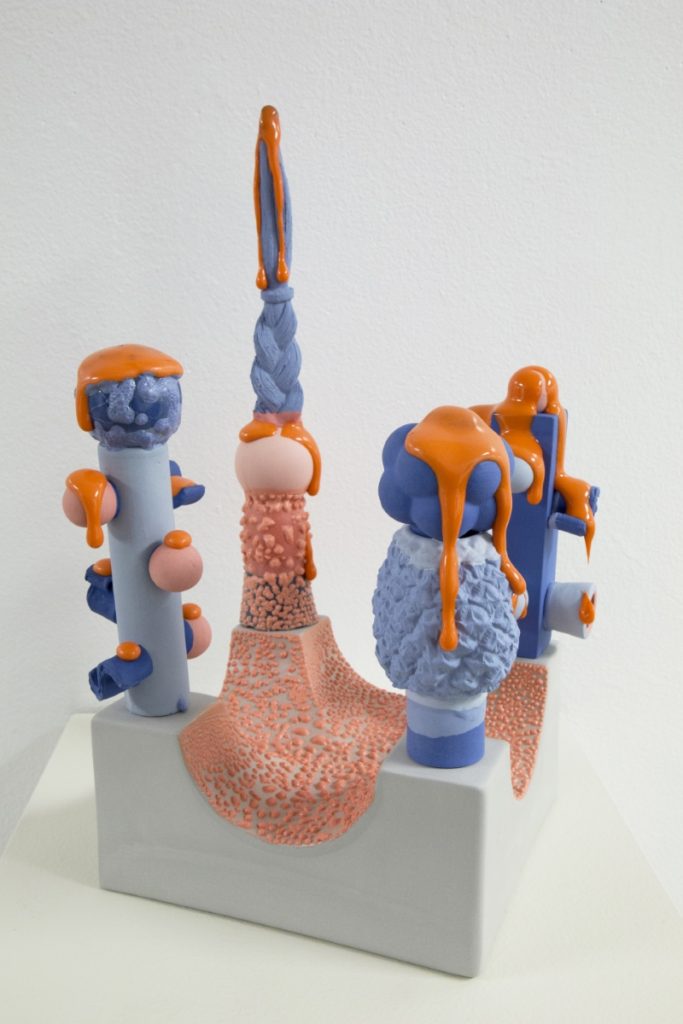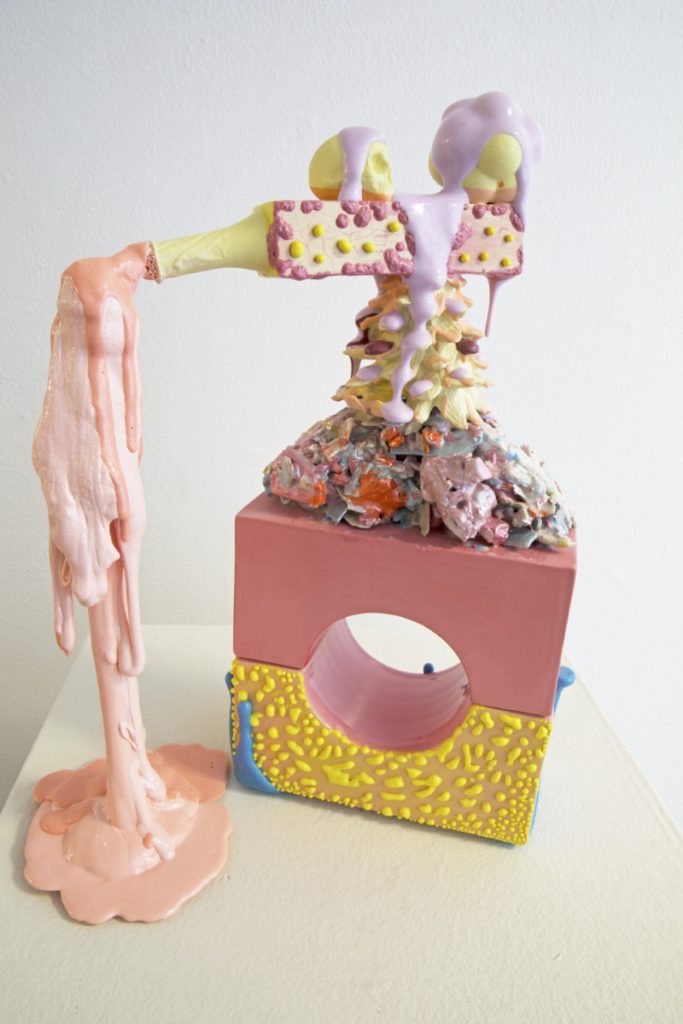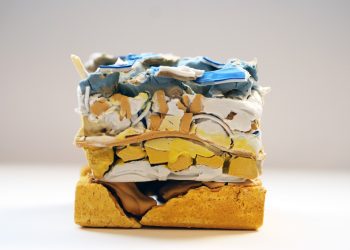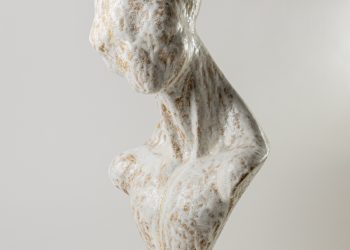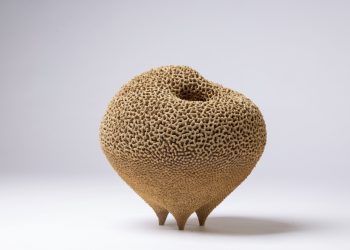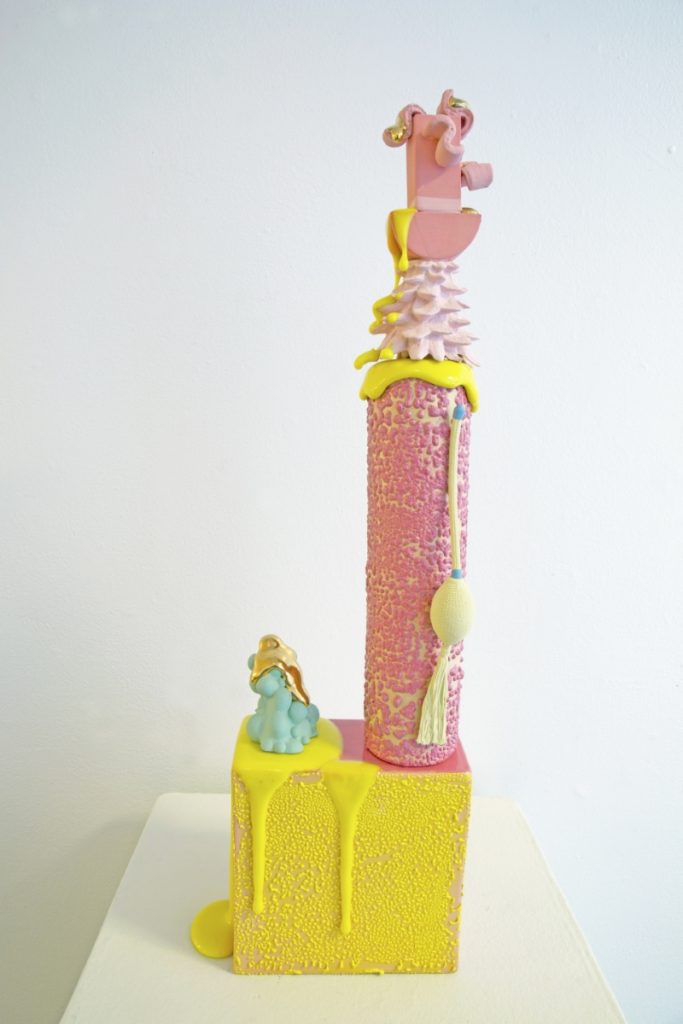
Joshua R. Clark, Blood Pressure Climb, 2019, Ceramics, 7L X 3.5W X 26H in 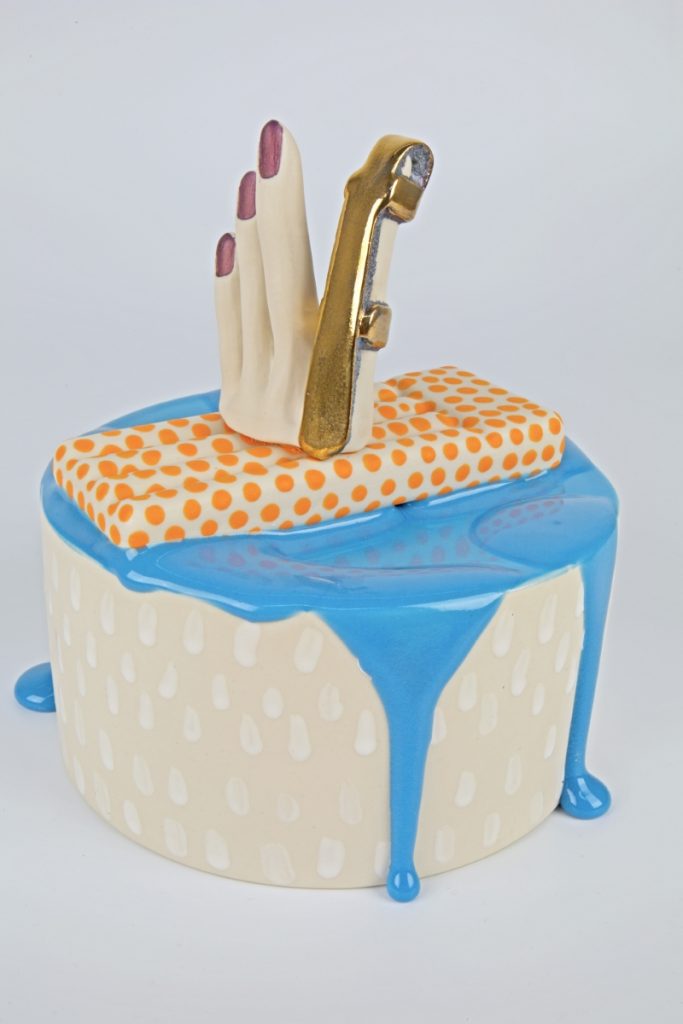
Joshua R. Clark, Golden Splint, 2020, Ceramics, 7L X 7W X 8H in 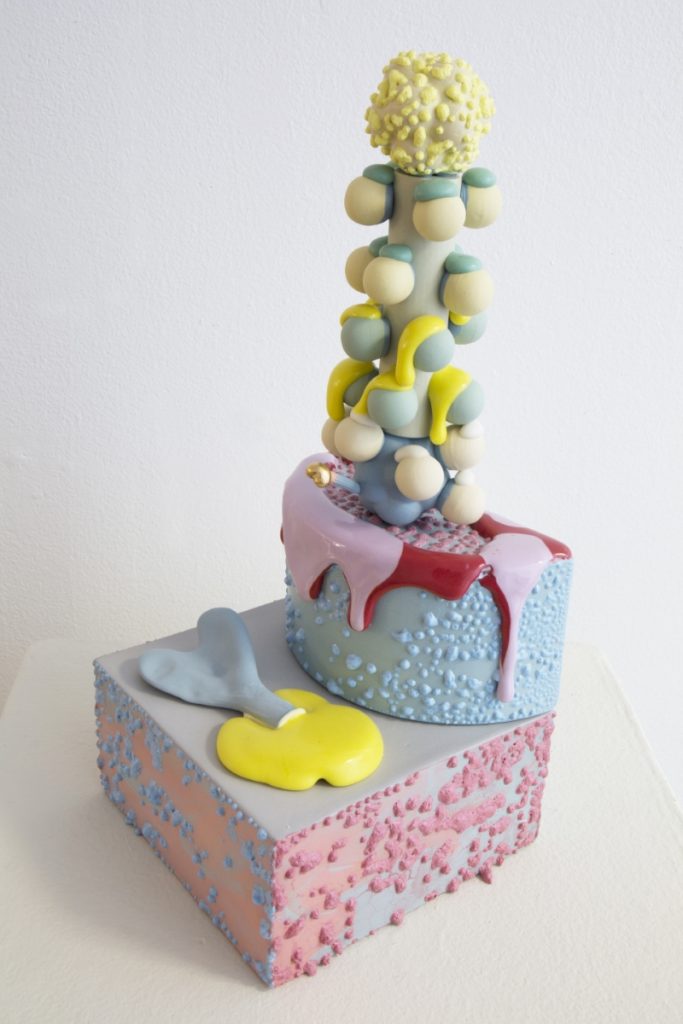
Joshua R. Clark, Golden Toast, 2019, Ceramics, 7L X 7W X 16H in 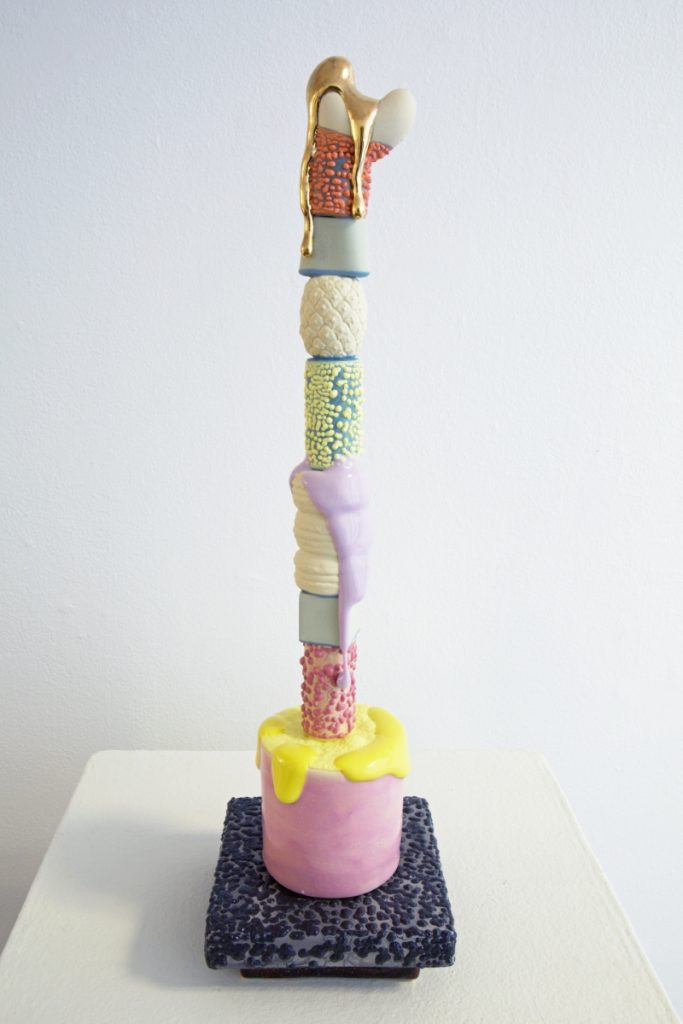
Joshua R. Clark, Lobster Bib, 2019, Ceramics, 6L X 6W X 21H in 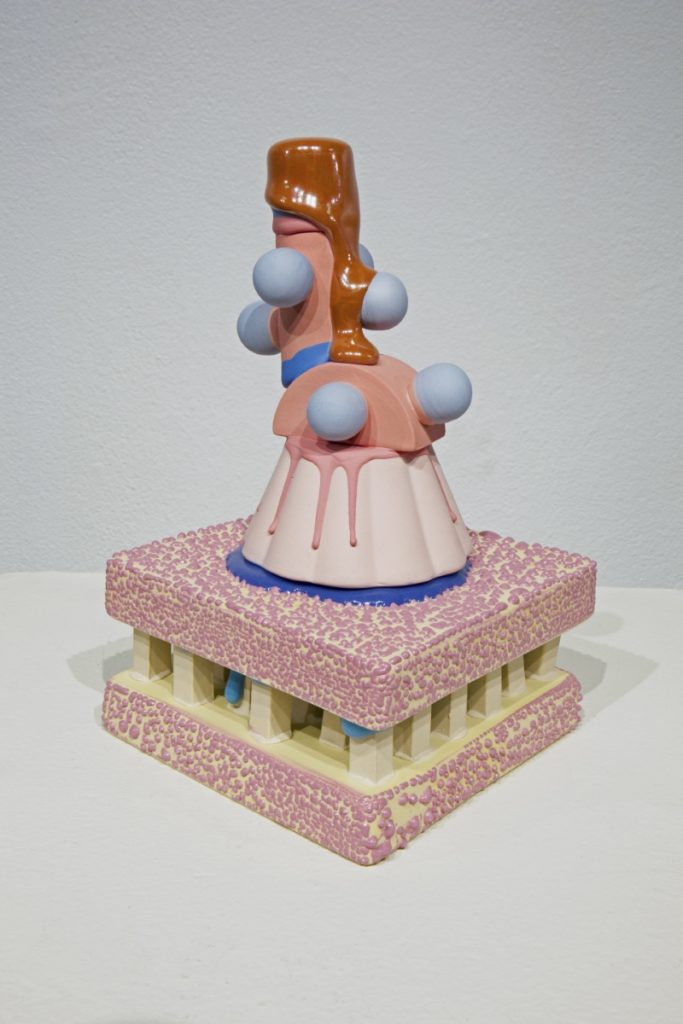
Joshua R. Clark, Low Voice, 2019, Ceramics, 6L X 6W X 6.5H in 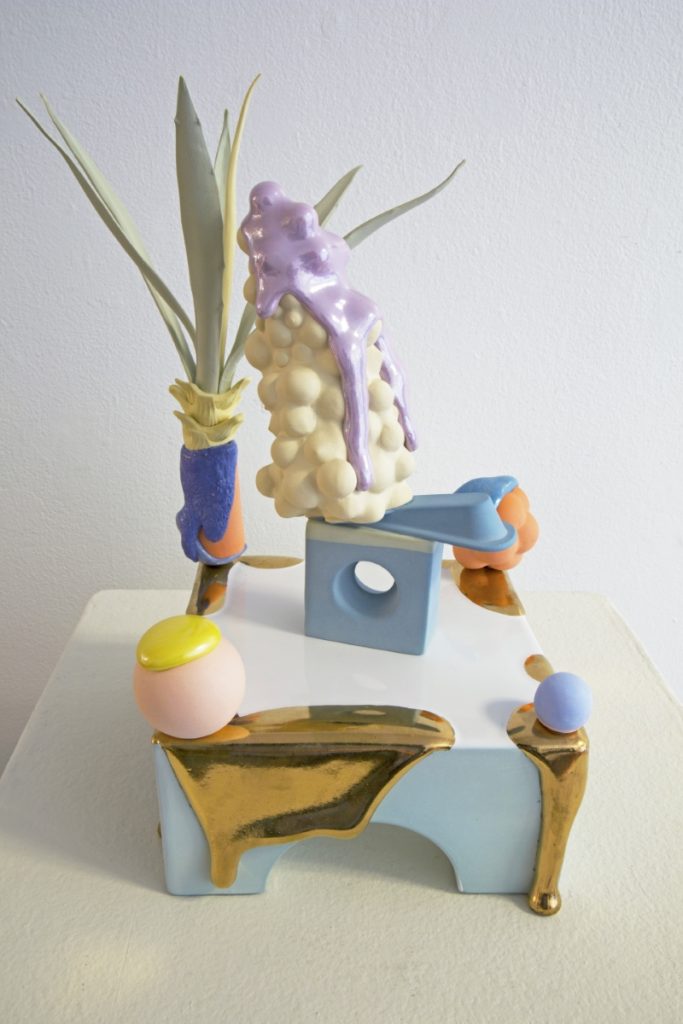
Joshua R. Clark, Palm Someday, 2019, Ceramics, resin, 11L X 10W X 16H in 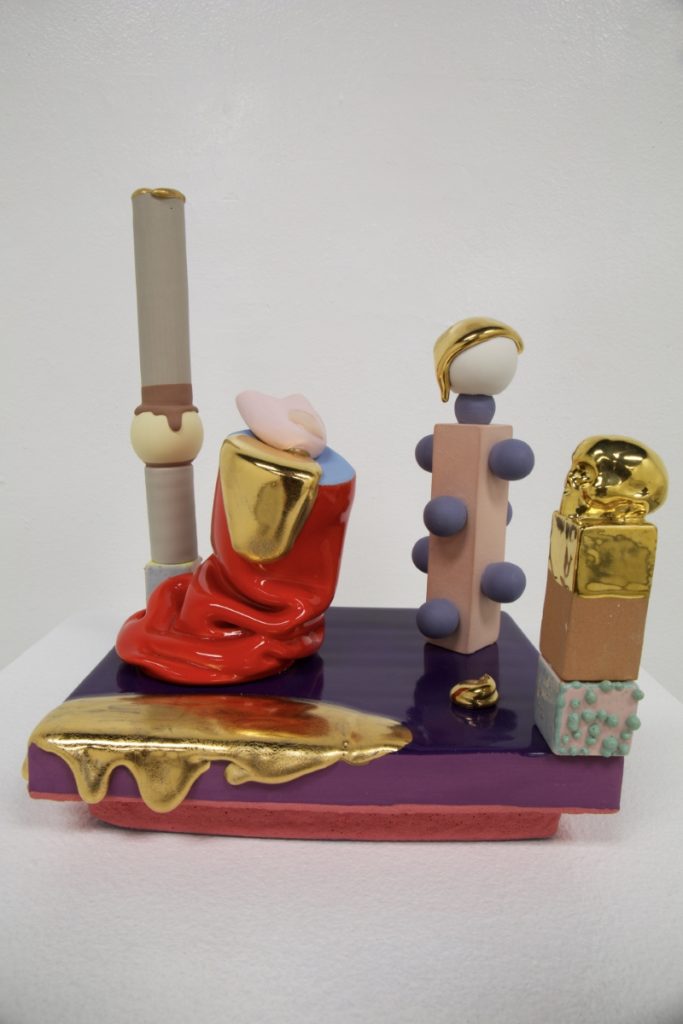
Joshua R. Clark, Party Politics, 2018, Ceramics, 9.5L X 8W X 12H in 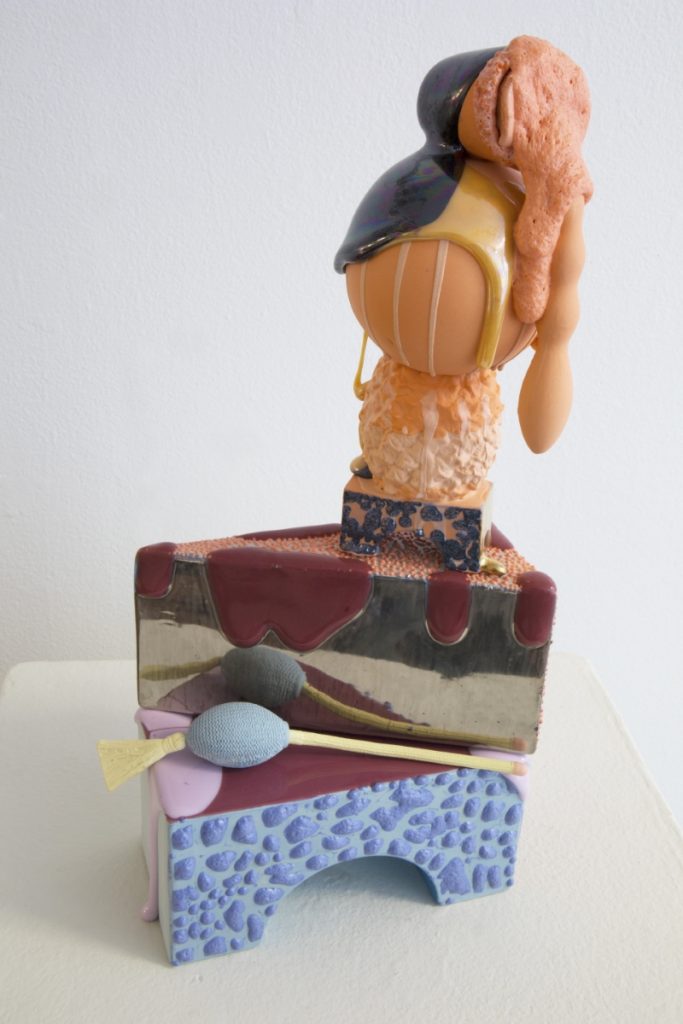
Joshua R. Clark, 2019, Perfumed Daydream, Ceramics, resin, 7L X 3.5W X 16H in 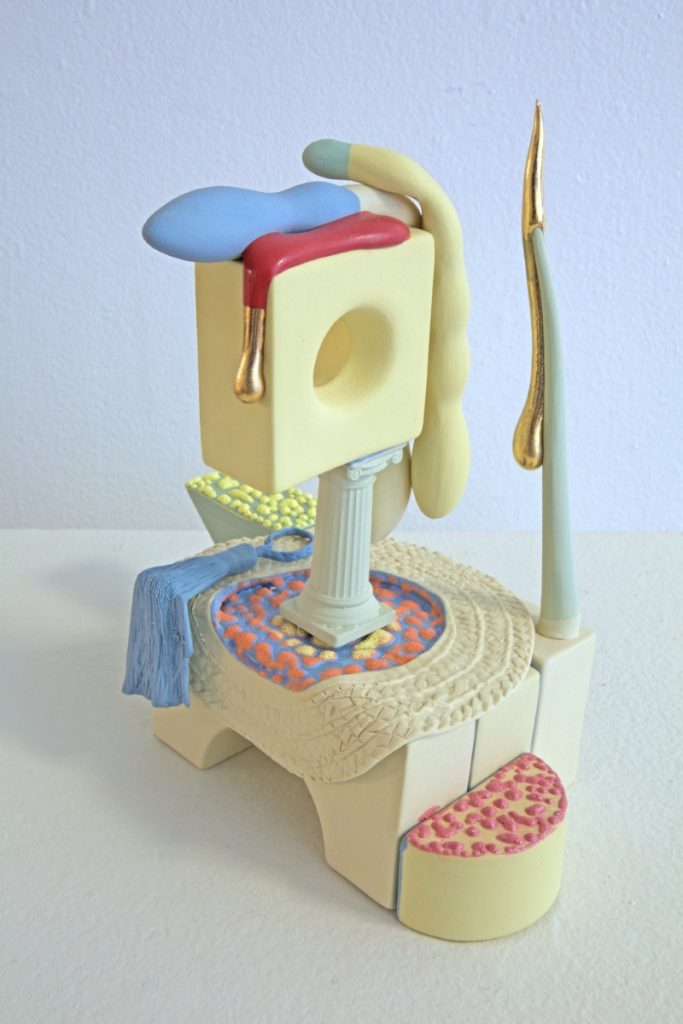
Joshua R. Clark, Soft Bait, 2019, Ceramics, 10L X 4W X 8H in
Joshua R. Clark: Small works, 2018-2020
The large sculptures implicate the viewers body in a more direct way, while the smaller sculpture rely on a more metaphysical understanding. This is to say that, the smaller works create their own worlds, while the larger pieces highlight the uncanny nature of ours. In both cases I am interested in the associative power of materials and objects to recall our attention to things we can understand emotively, but which always eludes our best efforts to articulate into spoken or written language correctly. It has always been in the encounter of things that exhilarate me in a troubling way, that I cannot explain, which motivates me to make art. The smaller sculptures happen quickly, I make them spontaneously from a library of forms that already exist in the studio. Their first concerns are formal, but because the molds I am making them from are all original forms I have idiosyncratically chosen to make, they end up having associative powers. The larger sculptures happen much slower. The idea is formed in the mind before it is physically manifested. In the larger sculptures there is often direct art historical references and psychological associations. For example, in the piece titled Number One, the red slip-cast of a foam finger makes direct reference to Michelangelo’s Sistine Chapel The Creation of Adam, and conflates this act of god creating the first human with a fan waving a foam finger at a sporting event proclaiming that their team is number one. In both cases there is a desire to be unique or singular. In both bodies of work I am trying to avoid linear narratives. I want there to be enough associative power in the pieces that they connect with the viewer, but no linear narrative that seeks to explain or make concrete claims.


